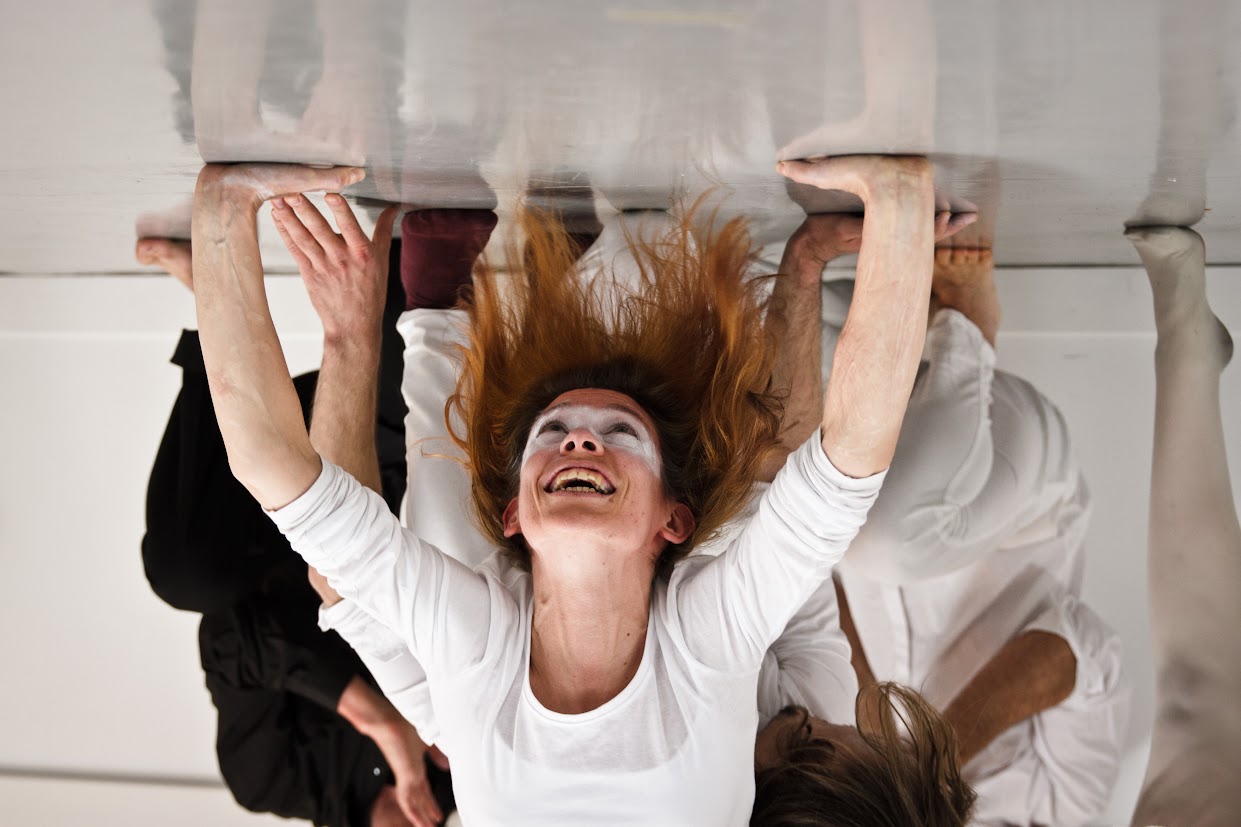

Some improvisation practitioners say that you should lay out the who, what, and where of a scene as quickly as possible. “Make strong decisions early, and everything else will fall into place.” It is a pragmatic, if repetitive, approach: you tick the boxes, ground the scene, and proceed to the good stuff.
We’d rather step into the space with nothing but our body, breath, and attention (curiosity on a good day). If we can stay with what is, the texture of a scarf, an arm resting on a chair, our own voice counting the steps it takes to cross the floor, we know that a story will emerge, sooner or later, because telling stories is what we do, invariably, in all aspects of our lives. By contrast, if we walk in already knowing that we’re playing a retired colonel, and sit in a chair as if it were ours, we’ll be answering to an idea, safe, autonomous, competent.
This is the difference between deduction and induction, two terms first differentiated by Aristotle. Deduction begins with a general assumption applied to a specific case. The classic example is: all humans are mortal, Socrates is a human, therefore Socrates is mortal. It is a top-down process, later prized by rationalist thinkers who trusted reason and structure over their senses. Using this method in improvisation, if we’ve decided to be “siblings in a kitchen,” we’ll work out what else must logically follow. The platform comes first, the play comes second.
Induction moves in the other direction. It starts with fragments of experience and builds upward. Francis Bacon, in the 17th century, placed induction at the heart of the scientific method: gather the evidence first, then let a pattern or hypothesis emerge. For instance, this swan is white, that swan is white. After many observations, you propose that all swans are white (which is wrong, by the way, but it doesn’t matter in this story). Induction is an empirical, bottom-up approach that derives knowledge from direct observation and experience. In improvisation, induction might begin with the weight of a chair under your hand, the rhythm of your footsteps, or a line that falls out of your mouth. The story is built from scraps.

In practice, improvisation shifts constantly between deduction and induction. Both are useful and always at play. Some prefer platform-first approaches, while others thrive in open worlds. If I must choose an opening, rather than a pre-existing thought in my head, I would rather place my attention on my own body and the surrounding space. This approach has produced more magical moments than I can recall.